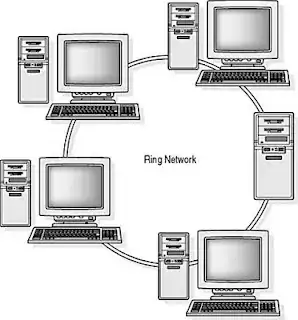I think the simplest answer to your question:
[...]one server will produce current and put it on the wire and then the electrons will flow and get captured by the first server down the line, but how do the electrons reach the second server ?
is:
The second server will retransmit the voltage at its own. That way it can change it if it needs to. It acts exactly the same as the first server.
The receiving server listens at its input, buffers the digital data contained in the signal on its network interface card memory and then retransmits this data at its output.
Olin is right in that basically a ring topology is built from several identical point to point connections. The real trick eg. in Token Ring, FDDI or CDDI is in the digital data contained in the electric signal. The servers are passing a 'token' around, but this is at a much higher abstraction level than your initial question.
I can't really think of any ring topology networks for computers/servers that is current. The ones I know have all been replaced with Ethernet over the past decade or so.
